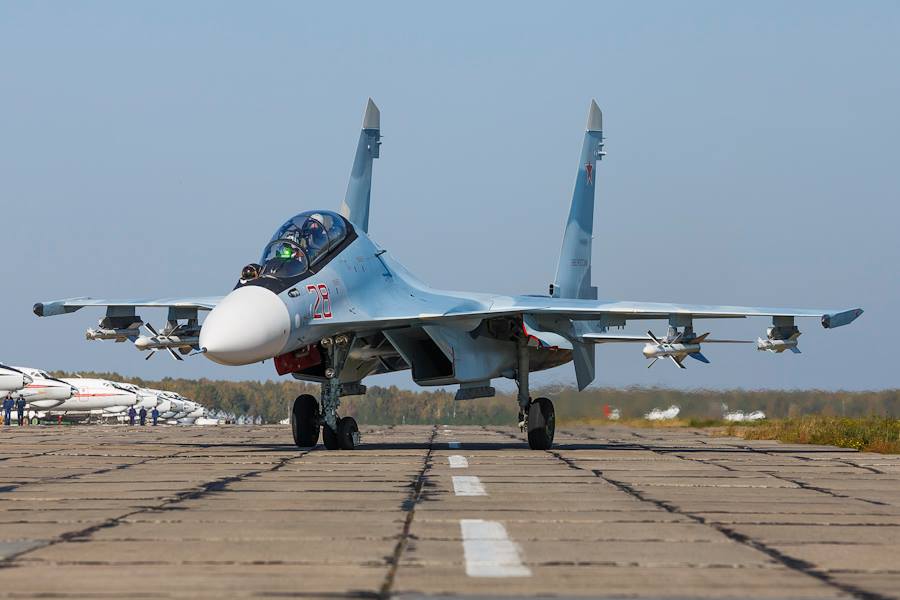It looks like a Sukhoi Su-30SM deployed to Syria has had a close encounter with Turkish Air Force F-16s past the Syria-Turkey border.
Russian planes deployed to Syria violated the Turkish airspace twice in the last couple of days.
According to NATO, the violations occurred “on 3 October and 4 October by Russian Air Force SU-30 and SU-24 aircraft in the Hatay region. The aircraft in question entered Turkish airspace despite Turkish authorities’ clear, timely and repeated warnings. In accordance with NATO practice, Turkish fighter aircraft responded to these incursions by closing to identify the intruder, after which the Russian planes departed Turkish airspace.”
Some more (sometimes contradictory) details appeared on the Turkish media outlets: although the first reports said the aircraft (initially IDed as Mig-29 Fulcrums – a type flown by the Syrian Air Force and not deployed in theater by the RuAF) breached into the Turkish airspace for 5 miles, according to Ankara, the Russian Su-30SM multirole plane violated Tukey’s airspace by “only” some hundreds of meters and returned to Syria after it was intercepted by two F-16s from the Turkish Air Force out of 10 flying CAP (Combat Air Patrol) near the border.
#BREAKING Turkish military says MIG-29 planes harassed 2 Turkish F-16s for 5 min.40 seconds during reconnaissance flight over Syrian border
— CNN Türk ENG (@CNNTURK_ENG) 5 Ottobre 2015
Furthermore, it seems that the Russian Su-30SM (as said, initially referred to as a Mig-29, before it was determined it was a Flanker-derivative multirole jet) maintained a radar lock on one or both the F-16s for a full 5 minutes and 40 seconds.
According the Russians, the violation was due to a “navigation error”: quite funny considered the type of navigation systems equipping a modern Su-30SM.
Although the navigation error can’t never be ruled out a priori, considering the equipment carried by a 4++ Gen. aircraft, and that it was flying next to a “danger zone” there’s reason to believe that the two pilots on board were perfectly aware of their position.
What is even more weird is the fact that the Russian plane locked the Turkish F-16s for such a long time: instead of turning back the RuAF Sukhoi was ready to fire (or to respond to fire).
Almost no details are currently available about the Su-24 Fencer violation.
As explained when a Turkish RF-4 was shot down by a Syrian coastal anti-aircraft battery after violating the Syrian airspace in 2012, aircraft entering a foreign airspace should not be fired upon but warned, intercepted and eventually escorted outside the violated airspace.
In 2014, a Syrian Mi-17 was shot down by a TuAF F-16, while in 2013 it was the turn of a Syrian Mig-23. But now the Turkish F-16s defending Ankara borders face a different threat….
Image credit: Russian MoD




















